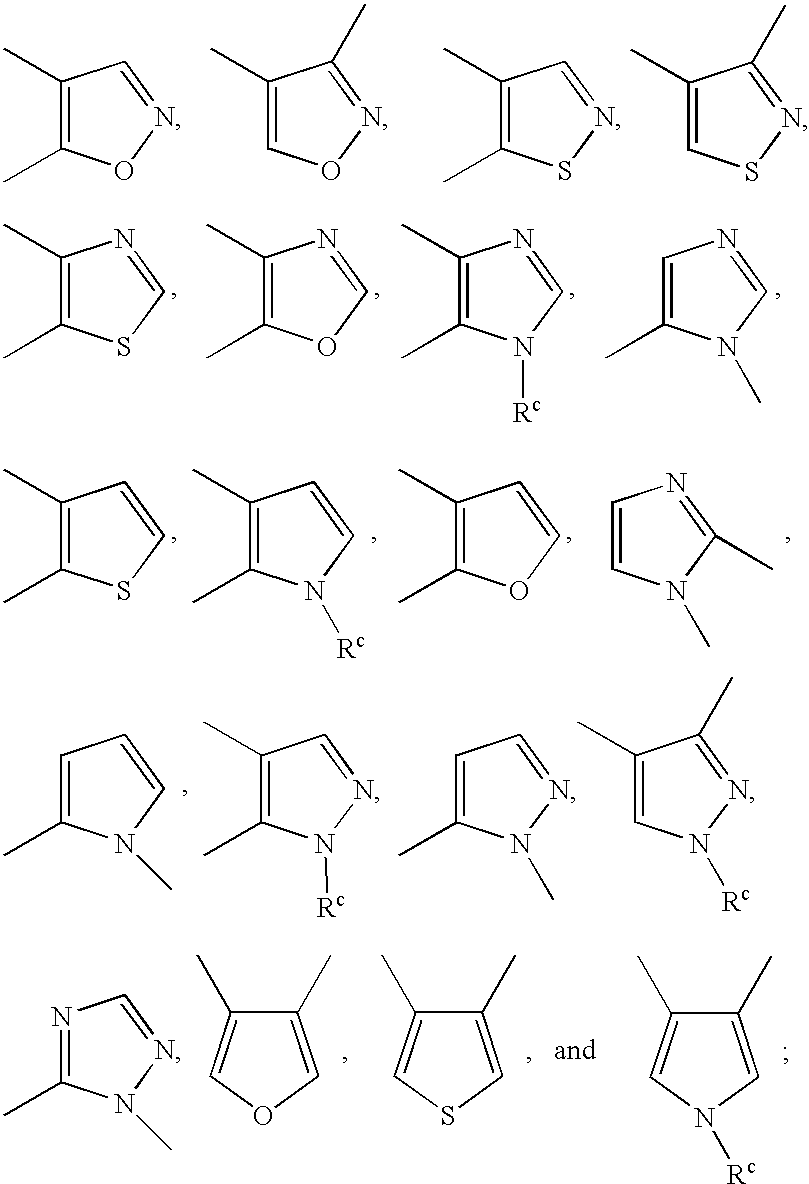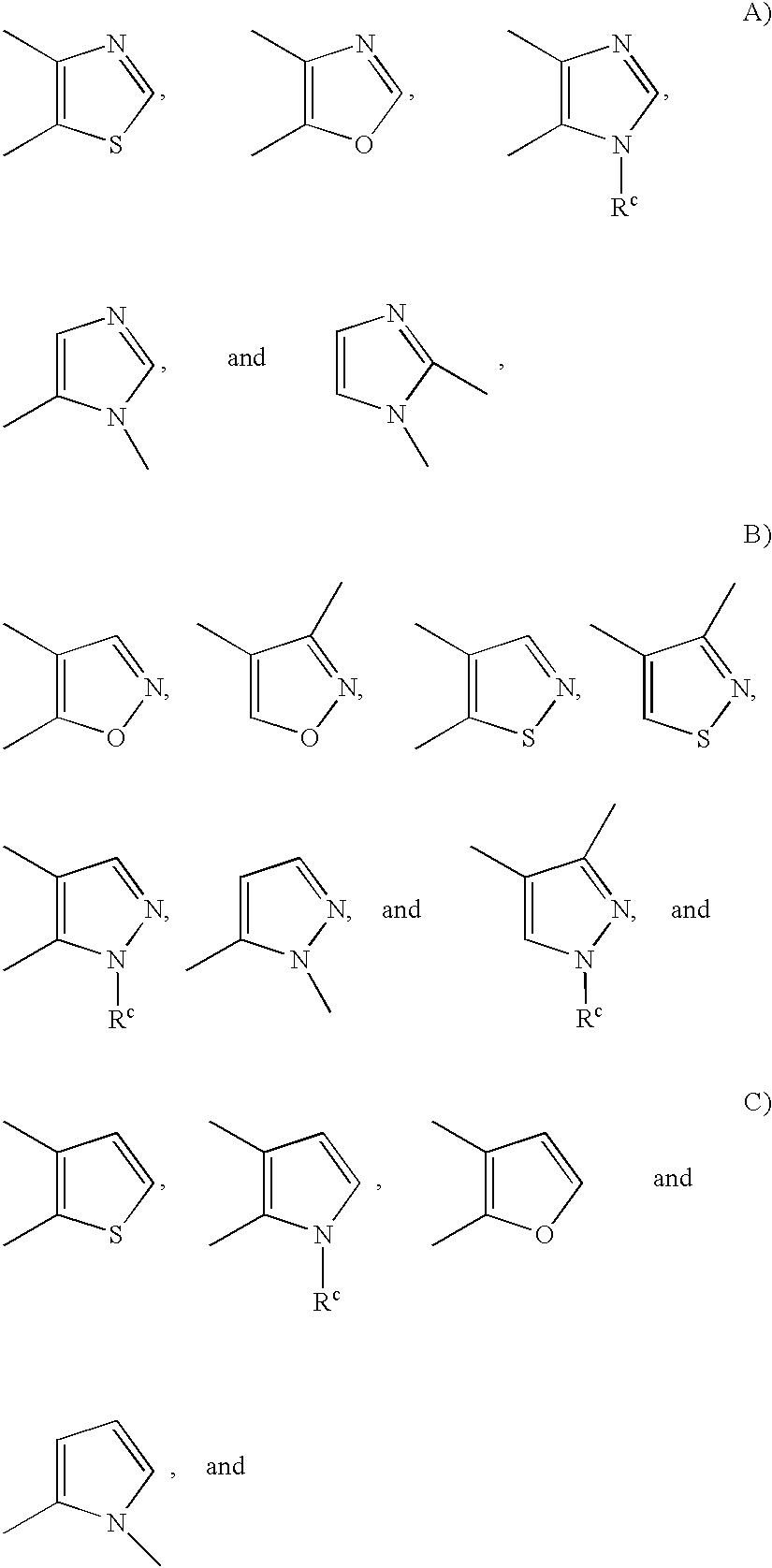Substituted amine derivatives and methods of use
a technology of substituted amines and derivatives, applied in the field of substituted amine derivatives, can solve the problems of fibrosis, abnormal stromal proliferation, excessive matrix deposition,
- Summary
- Abstract
- Description
- Claims
- Application Information
AI Technical Summary
Problems solved by technology
Method used
Image
Examples
example 1
[1390]
N-(4-Chlorophenyl)[2-(6-quinolylamino)(3-pyridyl)]carboxamide
Step A—Preparation of 2-(6-quinolylamino)pyridine-3-carboxylic acid
[1391]A mixture of 2-chloronicotinic acid (1.5 g) and 6-aminoquinoline (1.4 g) was heated at 140° C. neat for 2 h. The reaction was cooled to give a brown solid used in the next step without further purification. MS (ES+): 266 (M+H)+; (ES−): 264 (M−H)−.
Step B—Preparation of N-(4-chlorophenyl)[2-(6-quinolylamino)(3-pyridyl)]carboxamide
[1392]To a mixture of 2-(6-quinolylamino)pyridine-3-carboxylic acid (250 mg, from Step A) and 4-chloroaniline (120 mg) and DIEA (220 ul) in DMF (15 ml) was added EDC (220 mg) and HOBt (130 mg). The reaction was stirred at 50° C. for 3 h. The solution was evaporated under reduced pressure and mixed with CH2Cl2 (50 ml). The resulting solution was washed with 1N HCl, saturated NaHCO3, H2O and brine. The organic layer was dried over Na2SO4, evaporated under reduced pressure and triturated with CH2Cl2. The precipitate was filt...
example 2
[1393]
N-(4-Chlorophenyl)[2-(5-isoquinolylamino)(3-pyridyl)]carboxamide
[1394]The title compound was analogously synthesized by the method described in Example 1. MS (ES+): 375 (M+H)+. Calc'd for C21H15ClN4O—374.8.
example 3
[1395]
N-(4-Chlorophenyl)[2-(1H-indazol-6-ylamino)(3-pyridyl)]carboxamide
Step A—Preparation of (2-chloro(3-pyridyl))-N-(4-chlorophenyl)carboxamide
[1396]To a mixture of 2-chloronicotinic acid (4 g) and 4-chloroanaline (3.2 g) and DIEA (6 ml) in CH2Cl2 (200 ml) was added EDC (6 g) and HOBt (3.3 g). The reaction was stirred at RT overnight and washed with 2 N NaOH (100 ml), H2O (150 ml) and brine (100 ml). The organic layer was dried over Na2SO4 and evaporated to give (2-chloro(3-pyridyl))-N-(4-chlorophenyl)carboxamide.
Step B—Preparation of N-(4-chlorophenyl)[2-(1H-indazol-5-ylamino)(3-pyridyl)]carboxamide
[1397]A mixture of (2-chloro(3-pyridyl))-N-(4-chlorophenyl)carboxamide (200 mg, from Step A) and 6-aminoindazole (150 mg) was heated at 150° C. neat for 2 h. The reaction was cooled and washed with MeOH. The resulting solid was filtered to give the titled product. MS (ES+),: 364 (M+H)+; (ES−): 362 (M−H). Calc'd for C19H14ClN5O—363.8.
PUM
| Property | Measurement | Unit |
|---|---|---|
| Volume | aaaaa | aaaaa |
| Frequency | aaaaa | aaaaa |
Abstract
Description
Claims
Application Information
 Login to View More
Login to View More - R&D
- Intellectual Property
- Life Sciences
- Materials
- Tech Scout
- Unparalleled Data Quality
- Higher Quality Content
- 60% Fewer Hallucinations
Browse by: Latest US Patents, China's latest patents, Technical Efficacy Thesaurus, Application Domain, Technology Topic, Popular Technical Reports.
© 2025 PatSnap. All rights reserved.Legal|Privacy policy|Modern Slavery Act Transparency Statement|Sitemap|About US| Contact US: help@patsnap.com



